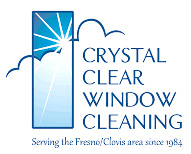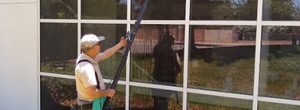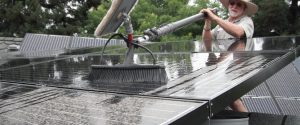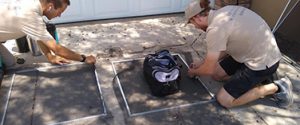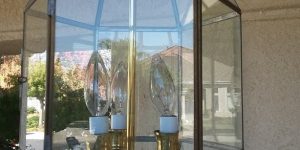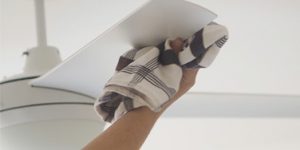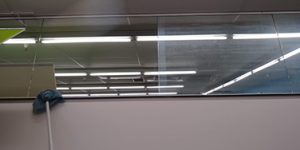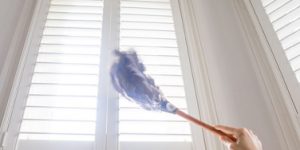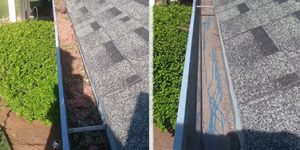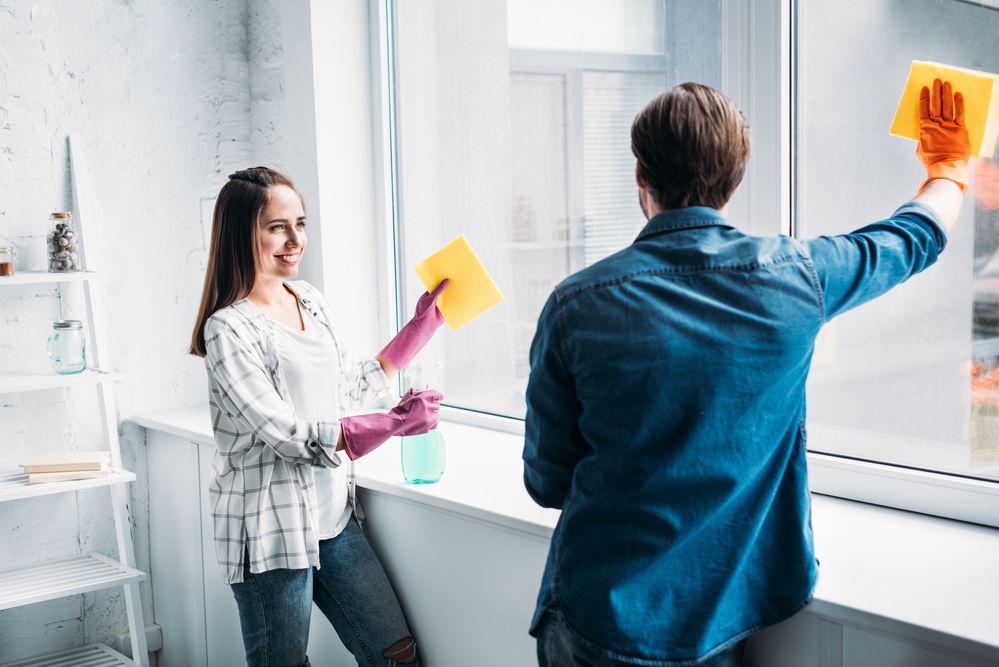Windows are the most essential part of any space. They help bring in natural light and give us a better view of the world outside. But dirty or streaky windows can easily take away the overall ambiance of a room. Keeping sparkling, crystal-clear windows in mind, here are some tried and true methods that will help you finish the job quickly.
1. Using Vinegar and Water for a Simple, Effective Clean
Vinegar and Water for the most basic, non-toxic method of Cleaning Windows Sometimes you can clean windows in the cheapest, most environment-friendly way possible: using a solution of vinegar and water. White vinegar is naturally acidic, which makes it break down grime, grease, and mineral deposits without any chemical content that can harm you or your window. It’s the perfect method for general cleaning and routine maintenance.
Making and Using a Vinegar and Water Solution
- Preparation: Fill a spray bottle with an equal mix of distilled white vinegar and water. If the windows are particularly dirty, add a few drops of dish soap to provide extra cleaning power.
- Application: Spray the solution on the window glass. For very dirty glass, allow it to sit for one to two minutes. Use a microfiber cloth or lint-free towel to clean in a circular motion.
- Buff and Shine: Use vertical or horizontal strokes to buff the glass clean of excess solution that prevents streaking. Then, polish with a clean, dry cloth.
Why Vinegar Works So Well
Mineral salts and other residues that usually find their way to depositing on windows, especially after the accumulation of hard water, are dissolved by acidity in vinegar. Low pH is what makes vinegar really gentle on oily residue free of film, thus assuring a streak-free clean surface for windows. Plus, it is a non-residual cleaner rather than some cleaners because it will not produce an electrostatic charge that attracts dust.
Extra Tips for Using Vinegar
Distilled Water: If the water is hard, switch to distilled water instead of tap water, as minerals within tap water can sometimes cause streaking.
- Try a Test Area: Generally safe, but it would still be wise to do a test on a tiny portion of the window in case there’s some chemical interaction.
- Add Essential Oils: If the smell of vinegar is too strong, you may add a few drops of lavender or lemon essential oils to your solution. That way, you can neutralise the smell of vinegar, but its effectiveness to clean will not be diluted.
- Pros: Extremely affordable, natural, and for daily dirt. Cons: Stinks very bad but it disappears quickly.
2. Using Commercial Glass Cleaner for Streak-Free Shine
For a readymade solution, there are commercial glass cleaners that target windows, mirrors, and other types of glass. These contain ingredients that cut down streaking and evaporate rapidly, making the product quite convenient and practical.
Choosing the Best Commercial Glass Cleaner
There are so many brands available, but not all deliver a streak-free finish. Look for products with good reviews on streak prevention and check if they are ammonia-based, known to provide extra streak-free results.
Step-by-Step Application
Spray the Glass Cleaner: Spray the glass cleaner evenly over the window. Avoid over-spraying, as this may cause too much product, which will cause streaks.
- Wipe Down: This can be done using a microfiber cloth, paper towel, or lint-free cloth to distribute and wipe off the cleaner. The best way to do it is by wiping in one motion, either vertical or horizontal.
- Buffing: If there is some residue that remains, you would then buff the window by taking a clean, dry cloth to make it shine.
- Windex Original: Windex is considered one of the original commercial glass cleaners known to bring streak-free results as desired by most consumers.
- Invisible Glass: This ammonia-free cleaner is popular for both indoor and outdoor use, known for its non-streak formula and versatility.
- Method Glass + Surface Cleaner: For those who prefer an eco-friendly option, Method offers a non-toxic cleaner with a pleasant scent and reliable performance.
- Best for: Daily interior window cleaning, particularly when in a hurry or as an emergency solution. Drawbacks: Not very eco-friendly compared to DIY methods; however, many commercial companies have started providing non-toxic products.
This squeegee method is a common procedure in professional window cleaning. It leaves a streak-free finish and is also quite ideal for large or outdoor windows. Using a squeegee requires little practice to get it right; once mastered, though, it could make window cleaning faster and more effective, especially on large or extremely dirty surfaces.

Preparing a Soapy Water Solution
- Recipe: Add a few drops of gentle dish soap to a pail of warm water. Do not add too much soap since this can create residue.
- Cleaning Procedure: Dip a sponge or soft cloth in the soapy water and apply it to the window. Rub particularly dirty areas to loosen the grime.
- Squeegee
- Angle: Squeegee at a 30-degree angle to the glass.
- Start point: This is at the top of the window; then it is pulled downwards in one motion without stalling.
- Overlap: Just overlap slightly after each pass compared to the previous pass. This prevents streaks that might develop.
- Wipe the squeegee: Clean the blade between passes by clearing away any accumulated water or debris.
- Dry the Window Edges: Next, use a cloth to dry the window edge to remove all the water spots.
Advantages of the Squeegee Technique
A squeegee is effective at eliminating both water and soap with no streaks at all. It is effective when cleaning large-sized windows, especially those from the outside. Moreover, when you use a squeegee on windows, much of the cleaning solution will be reduced, time-saving and money-saving simultaneously.
Pro Tips for Using a Squeegee
- Extendable Poles: If you have high windows or really large windows, look for a squeegee with an extendable pole.
- Practice: It takes a little time to master the squeegee technique. Practice first on a small window or glass door before doing larger surfaces.
- Dry Cloth for Buffing: Lastly, buff off with a dry lint-free cloth so nothing will leave behind any water spots.
- For Best: Wide windows, extremely smoky outside walls, extremely sooty external windows. Downsides: takes a little bit of practice to finish with no streaks showing up on panes.
4. Cleaning Outside Windows You Can’t Reach with a Water-Fed Pole
Water Fed Pole Window Cleaning cannot be accessible at Ground Level You reach outside windows and, primarily, the higher levels where breaking is hazardous if someone is injured while trying. Washing these kinds of windows is less painful if done using water-fed poles; you can get done working below, if you do not use a ladder.
What is a water-fed pole System?
A water-fed pole system is a long extendable pole connected to a brush head that has a source of water. Some use purified water, which dries without streaks and creates no mineral spots.
How to Use a Water-Fed Pole System
- Preparation: Attach the pole to a hose or purified water system.
- Scrub and Rinse: Use the brush head to scrub the window surface. Scrub in a systematic motion from top to bottom. The water jets on the pole rinse the window as you go.
- Air Dry: If you use purified water, allow the window to dry on its own. Purified water does not leave streaks or mineral deposits, so you do not have to dry.
Advantages of Using Water-Fed Pole
The greatest benefit of this system is safety. It allows you to clean windows on high floors without ladders. In addition, using purified water means that your window will be streak-free, and no extra chemicals are needed.
Best for Very Dirty Windows
The water-fed pole system is one of the best solutions to very dirty windows because it can reach up high and scrub hard areas.
- Pros: Safe, efficient, and streaks out of the high windows.
- Cons: The initial setup is expensive and requires access to purified water for results.
5. Extremely Dirty Windows Cleaning with Scraper and Degreaser
Sometimes, a window needs more than just a cleaning solution, especially in a case of post-construction residue, paint splatter, or even years’ worth of grime built on the window. In cases like these, the help of a scraper and some degreasing solution might be necessary to return your windows to crystal-clear brilliance.
Deep Cleaning Process
- Apply Degreasing Solution: Apply a commercial degreaser to the window and let it sit for some minutes to break down those stubborn residues.
- Scraping Method: Gently scrape at an angle of 45 degrees to remove dirt using a scraper. Do not scrape too hard as this can scratch.
- Second Cleaning: After removing the stubborn places, remove streaks and sticking leftovers using vinegar solution or commercial glass cleaner
Professional Tips
- Try the Scraper: Always test the scraper on a small area so you don’t scratch it.
- Regular Wiping: Scrape the glass surface and remove all remnants using a clean cloth so that the remnants don’t dry on the glass.
- Best for: Tough cleaning, construction residue, really dirty windows. Disadvantages: More time-consuming and requires care to prevent scratching.
Conclusion
This would make it possible to have crystal-clear, streak-free windows with the right techniques and tools. Whether using a homemade vinegar solution, a commercial glass cleaner, or a professional squeegee method, each offers unique benefits tailored to specific cleaning needs. And, of course, using the right equipment, such as water-fed poles for high windows or scrapers for tough grime, can make all the difference in quality.

